Monthly Archives: December 2015
Barn Owl
The Great Arizona Encore: The Patagonia Picnic Table Effect Reversal
It’s a busy time of year right now with all the decorating, gift-buying, and holiday food prep–it’s a good thing my wife’s got all that covered so I can finally bring you some AZ stories. Actually, writing the annual Christmas letter is about my only task this time of year, and much to my wife’s chagrin, this remains a grossly unfinished task. Please don’t tell my wife I’m blogging right now.
So where were we with AZ? Oh yes, our family had departed Green Valley after a two-day stay and were about to go on a loop tour around the Santa Ritas, heading down to Nogales and back up through Patagonia and Sonoita. There were only a couple birds on the agenda for the day. The first (and also most exciting prospect) was checking on a Barn Owl day roost–somewhere in southern Arizona. 🙂 For some reason, Evan has latched on to this species and was one he really wanted to see. He’ll refer to it by its scientific name, Tyto alba, and he’s been known to play its blood-curdling scream on his iPod in our house.
Once we got to the Owl’s roost, I walked up to this tower of sorts and looked up into the rafters. Immediately I locked eyes with my Barn Owl lifer, tucked way up in the shadows! Just as I started to point it out to Evan and my dad, the Barn Owl flushed out of the opening right toward us! Of course I wasn’t ready with the camera, but our looks at this Owl were hard to beat. Evan, bug-eyed, said in an astonished voice, “Whoa, Tyto alba just flew right by me!”
With no photo, the sighting was bittersweet for me. But a Barn Owl seen is way better than no Barn Owl, so off to Patagonia we went. In this city (and southern AZ in general), birders are the norm and not the nerd-freaks that people think of us in other places:
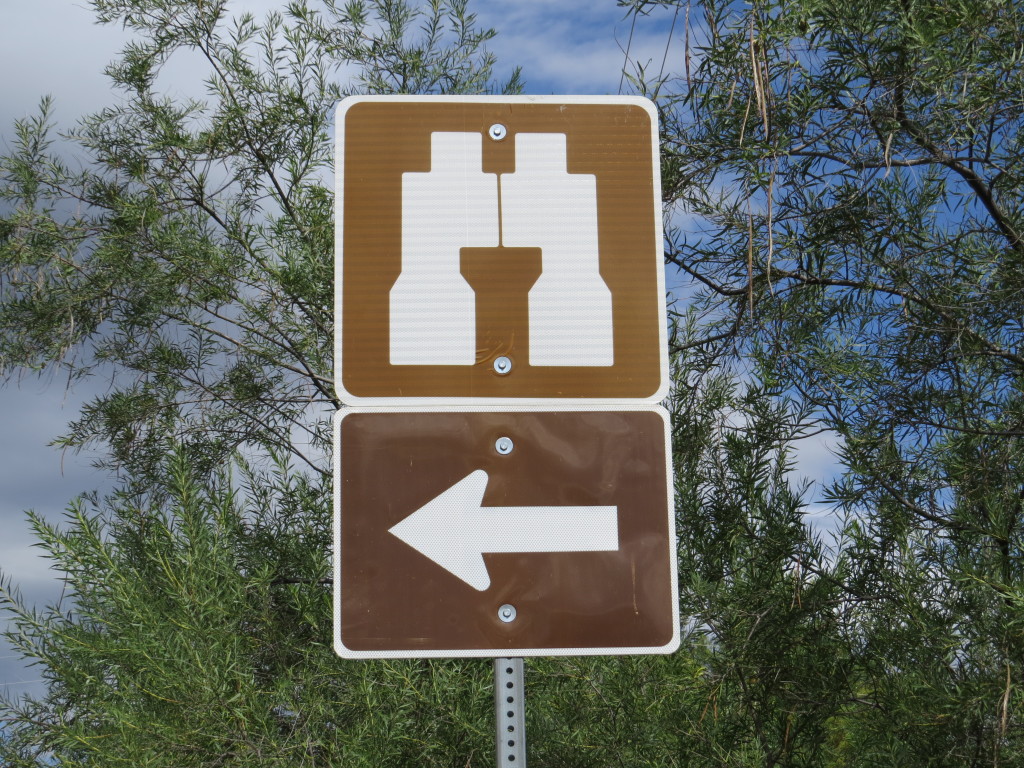
Patagonia is hallowed birding ground where all kinds of birding myths and legends originate. In fact, a famous birding phenomenon known as the Patagonia Picnic Table Effect was coined from something remarkable that happened here that has also played out numerous times in many other locations. Here’s the PPTE in a nutshell: some birders in the 1970s stopping for lunch in Patagonia discovered a rare bird which brought in more birders who discovered more rare birds in that location. Whenever I find a rarity, I always hope it’s the beginning of the Patagonia Picnic Table Effect. Needless to say, Patagonia is a place I have longed to visit after reading about it in books.
Despite the fact that the PPTE is based on multiple rarities and despite the fact that we were actually in Patagonia, I was after one bird at one very famous location:
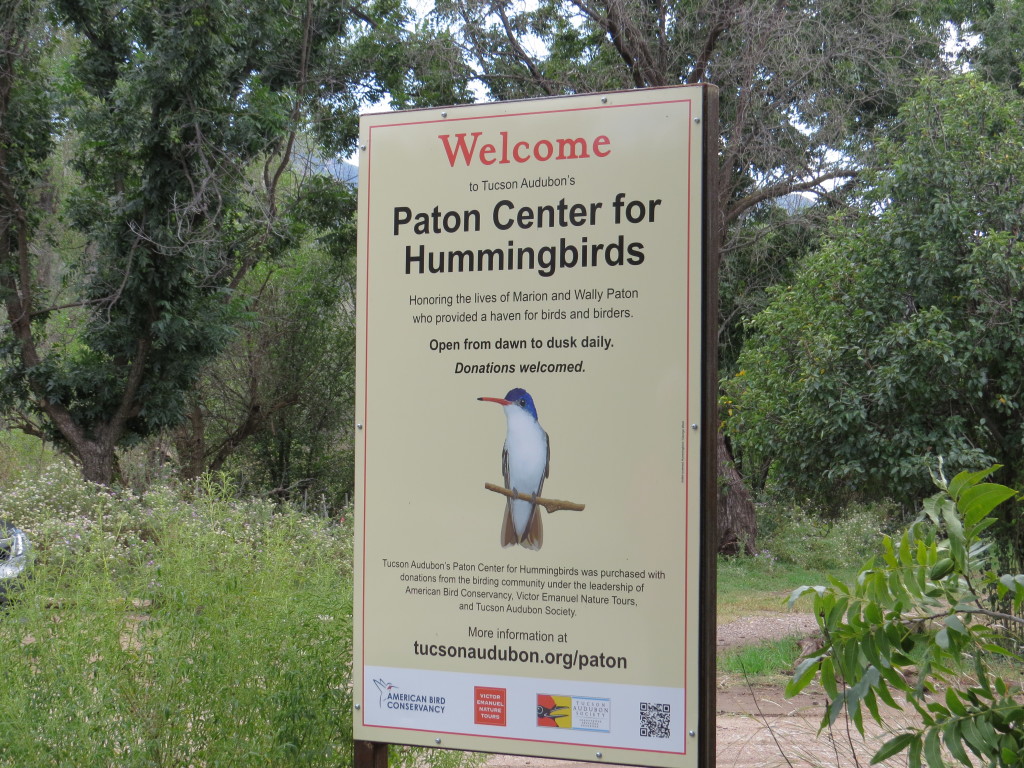 The famous Paton House–hard to believe I was actually here.
The famous Paton House–hard to believe I was actually here.
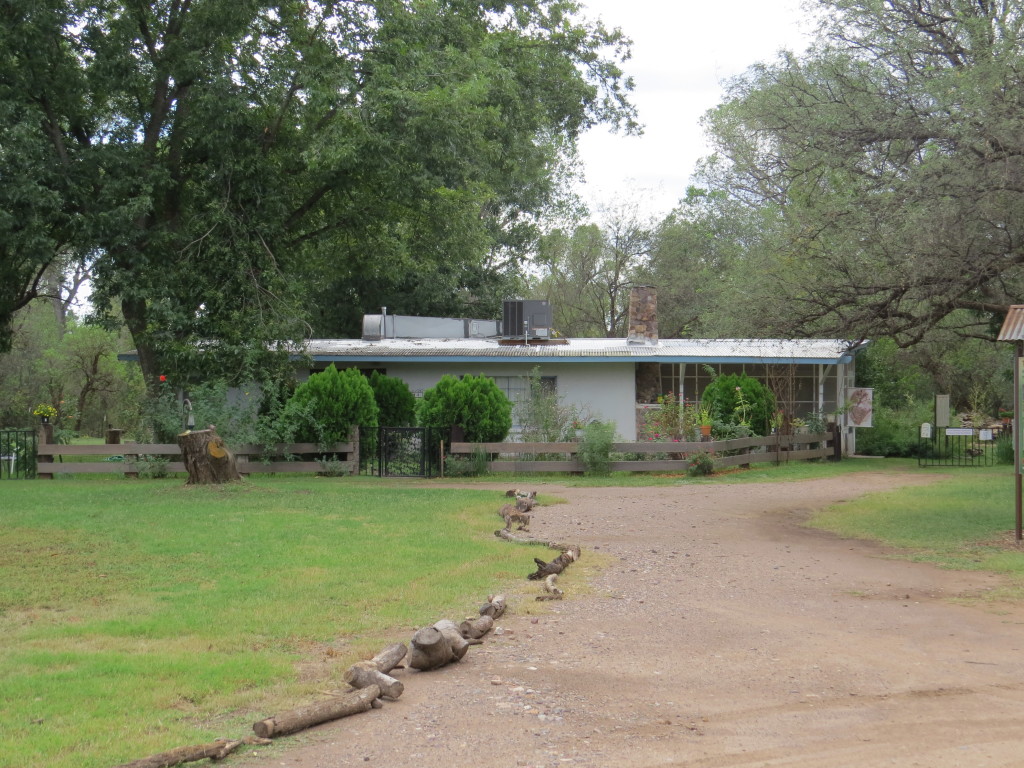 No, we didn’t come for the common White-winged Doves, though they were dapper and only the second time we’d seen one.
No, we didn’t come for the common White-winged Doves, though they were dapper and only the second time we’d seen one.
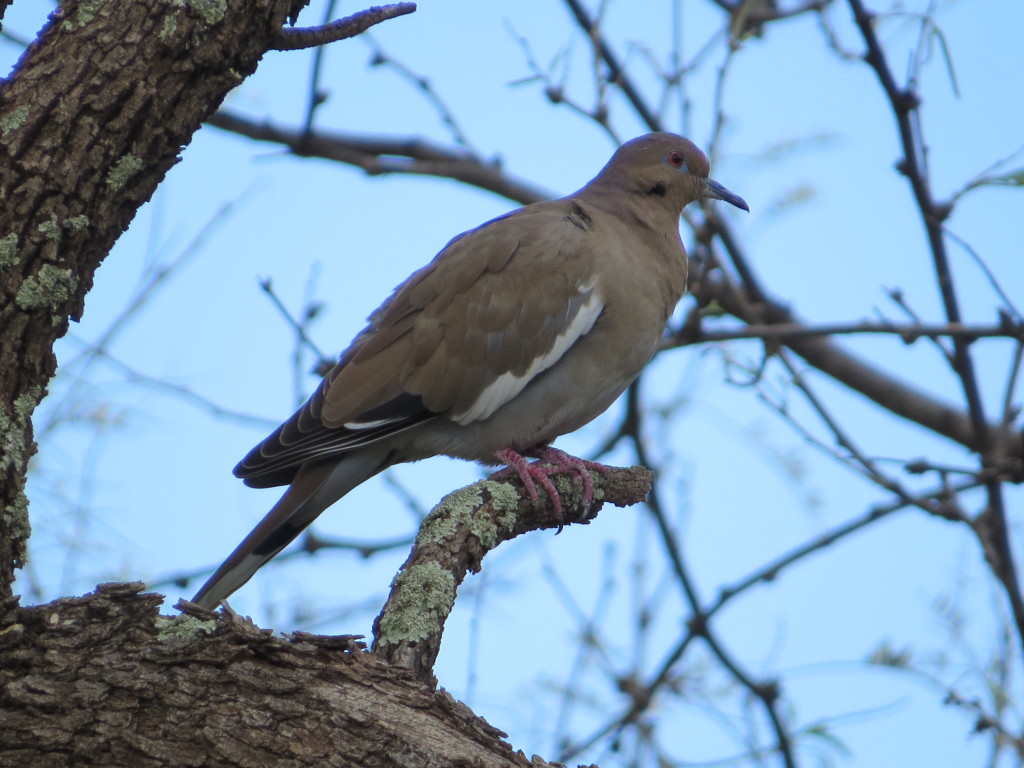 Nor did we come for the WWDO’s cousin, the much less abiding Inca Dove.
Nor did we come for the WWDO’s cousin, the much less abiding Inca Dove.
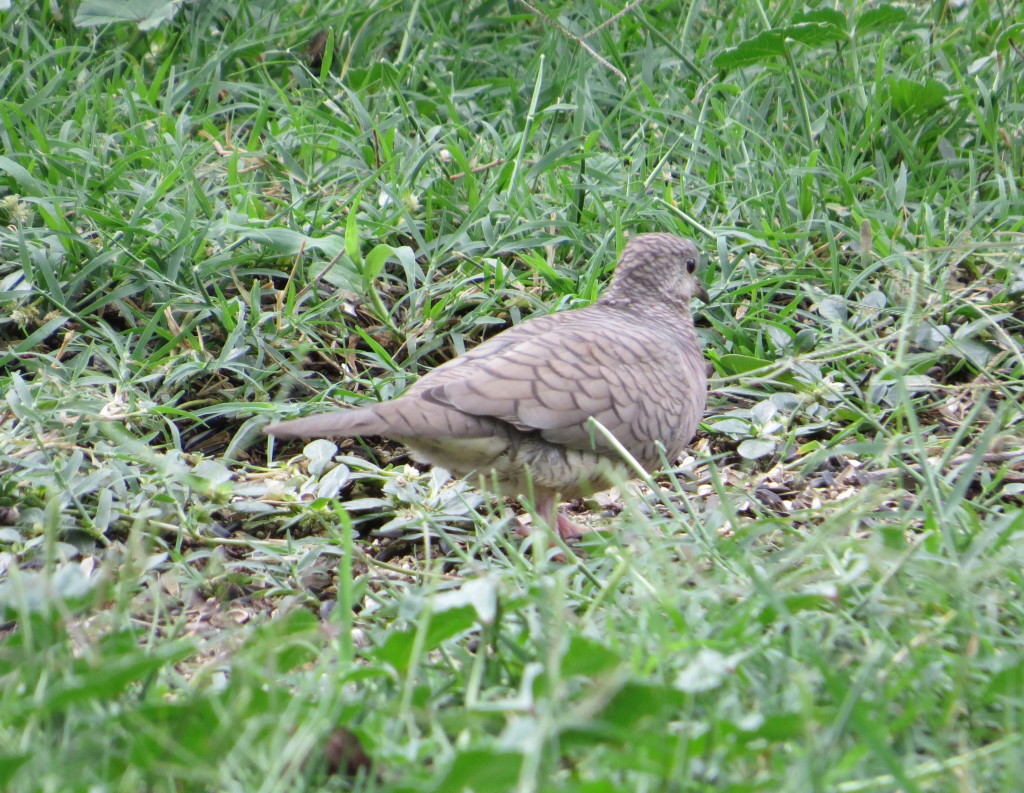 It was nice to see a Black-headed Grosbeak even if it was a bit scruffy looking, but that’s still not why we came.
It was nice to see a Black-headed Grosbeak even if it was a bit scruffy looking, but that’s still not why we came.
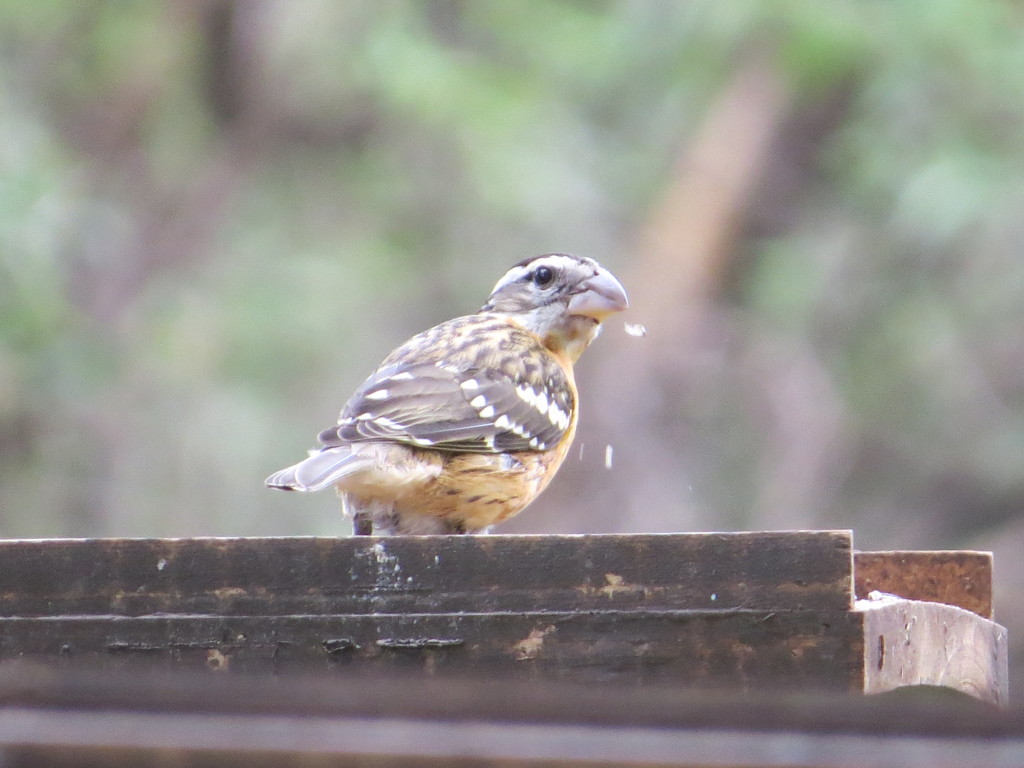
I very much enjoyed up-close looks at my first MALE Gila Woodpecker–still not why we came though.
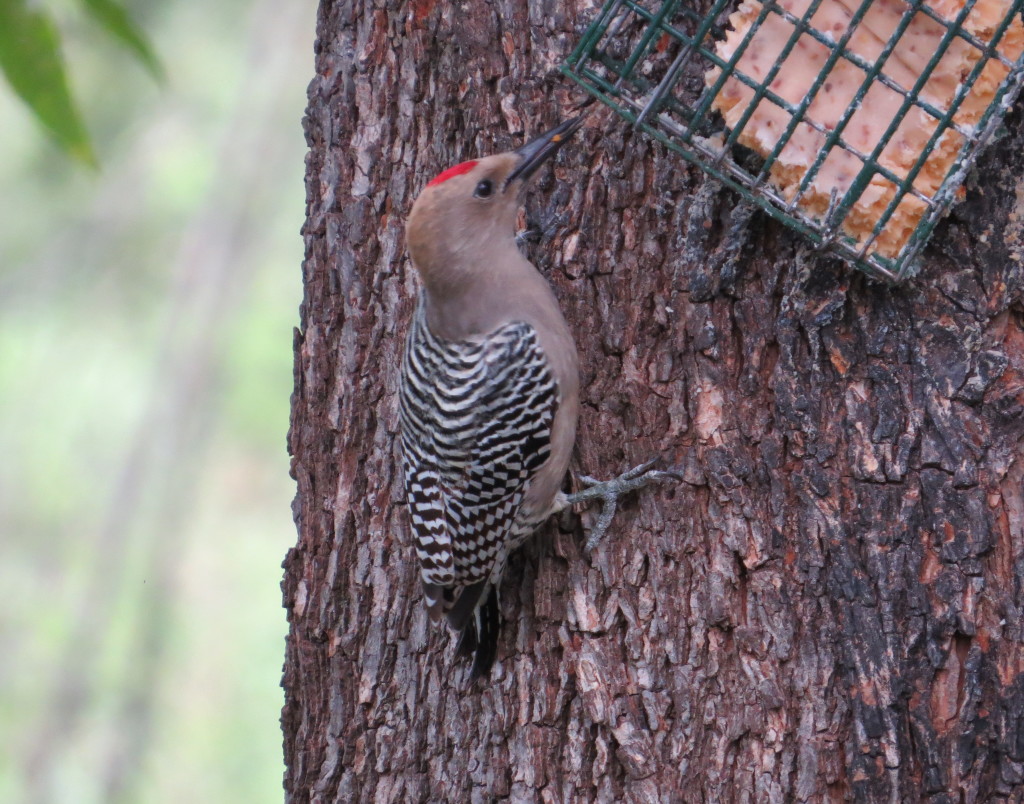 We came for the Hummingbirds. But not for the Broad-billed.
We came for the Hummingbirds. But not for the Broad-billed.
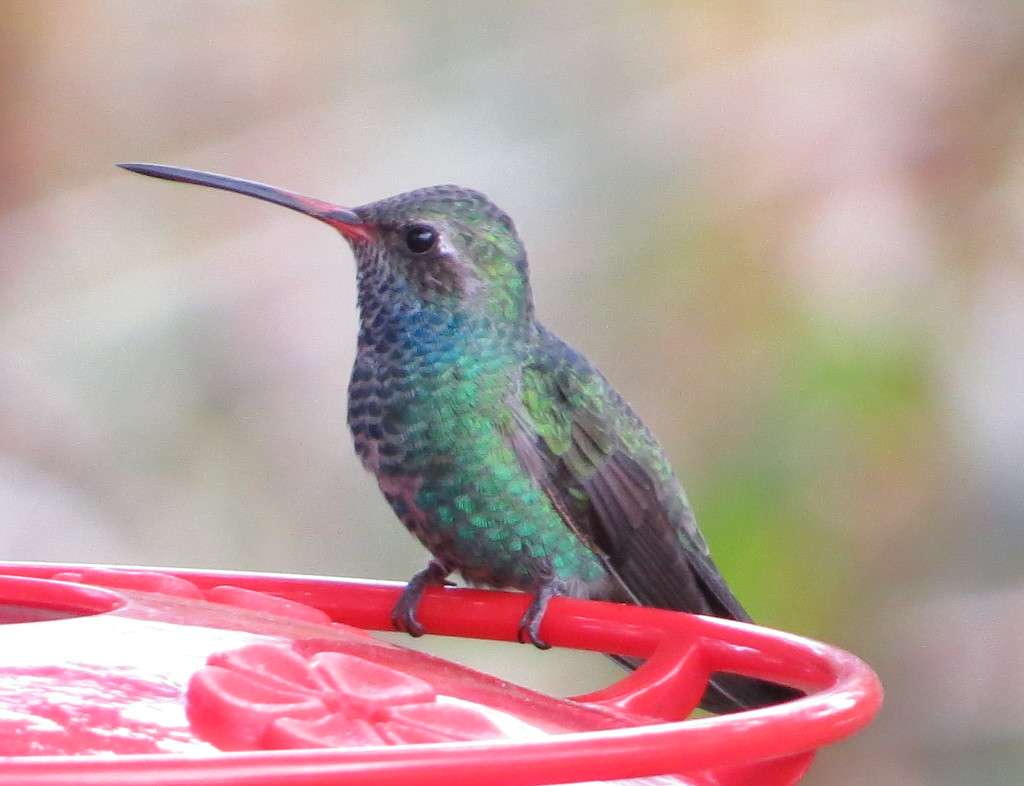
Sorry, this teasing is annoying, especially since you knew from the first photo that the main attraction is the Violet-crowned Hummingbird. Like so many birders before us, we made our pilgrimage to Patons’ just to add this key lifer. Good thing we saw one.
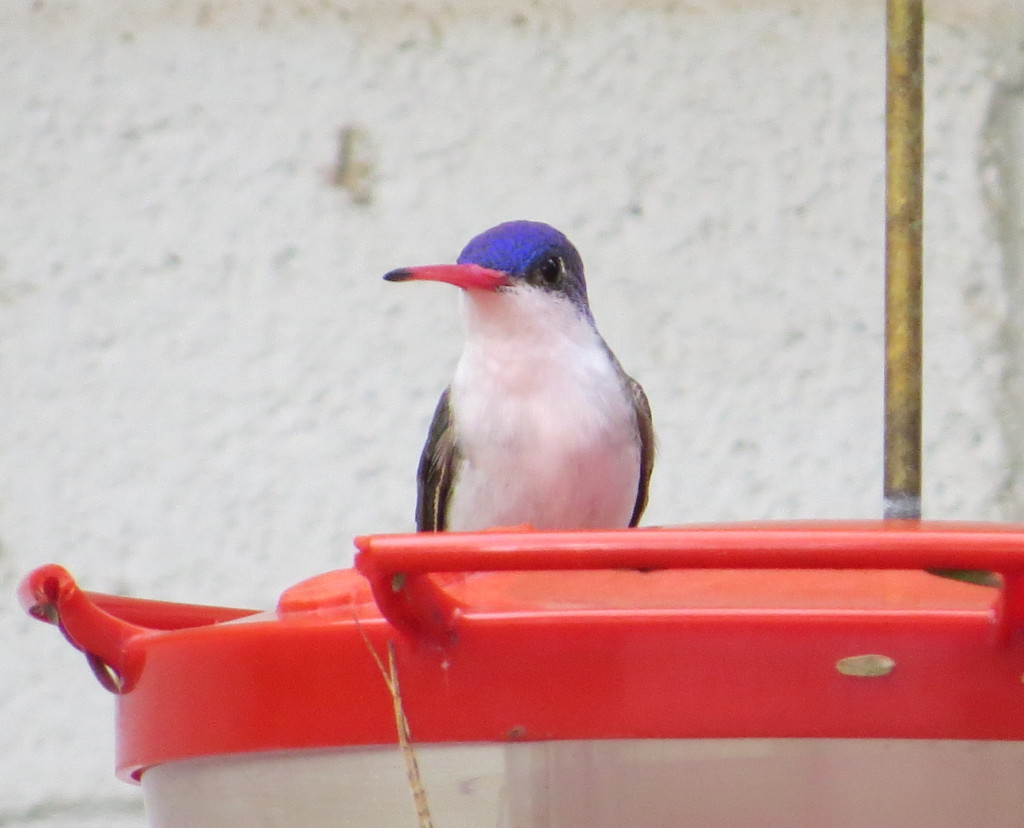 Ain’t it a beaut?
Ain’t it a beaut?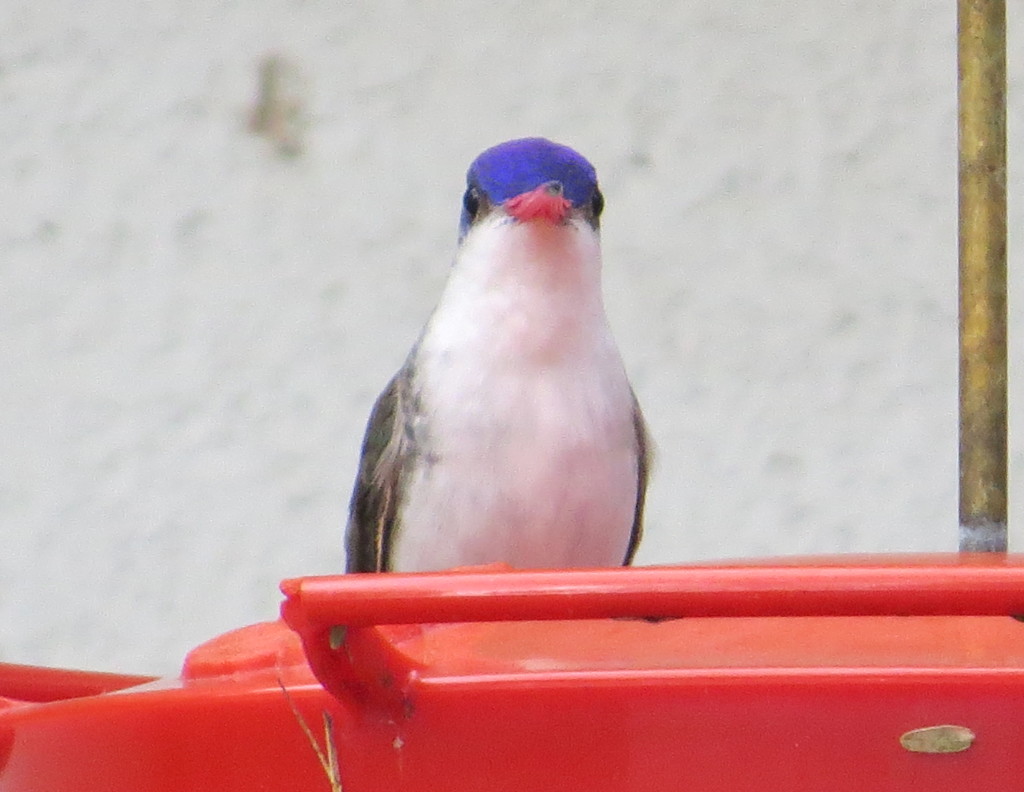 It knows it too. Like Orcas or Dolphins, it pandered to its gawking audience.
It knows it too. Like Orcas or Dolphins, it pandered to its gawking audience.
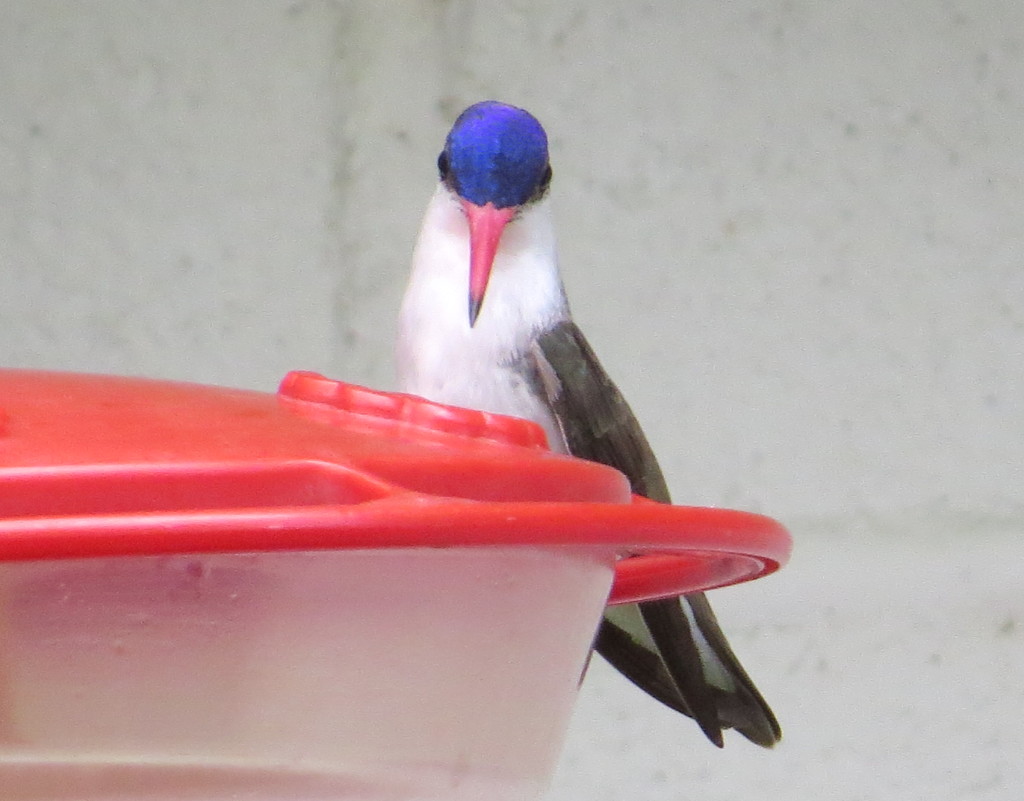 So that was that. Tommy DeBardeleben and Gordon Karre had told me about a much rarer Hummer, the Plain-capped Starthroat, that had been seen regularly somewhere in Patagonia. Not knowing exactly where to go for it and not feeling I could make yet another birding stop with the non-birding family, I didn’t even bother to check into it.
So that was that. Tommy DeBardeleben and Gordon Karre had told me about a much rarer Hummer, the Plain-capped Starthroat, that had been seen regularly somewhere in Patagonia. Not knowing exactly where to go for it and not feeling I could make yet another birding stop with the non-birding family, I didn’t even bother to check into it.
Instead, my family and I ate lunch at a park in Patagonia after a successful trip to Patons’. It wasn’t until we were somewhere past Sonoita that it dawned on me–we ate lunch at a real life Patagonia picnic table. And ironically, I don’t recall seeing/hearing a single bird in that park while we ate. Back to that Plain-capped Starthroat, I also didn’t realize until we got home that we had driven within a block of that ultra-rare Mexican bird. I probably could have stopped to watch a feeder for a bit and not wrecked the family’s travel schedule. I am sure this will haunt me for years, possibly decades.
Moving on, we finally made it back to Maricopa. Before we got to my parents’ house, though, we had to check up on a couple of old friends in my parents’ neighborhood. Love this guy (or gal–there’s one of each).
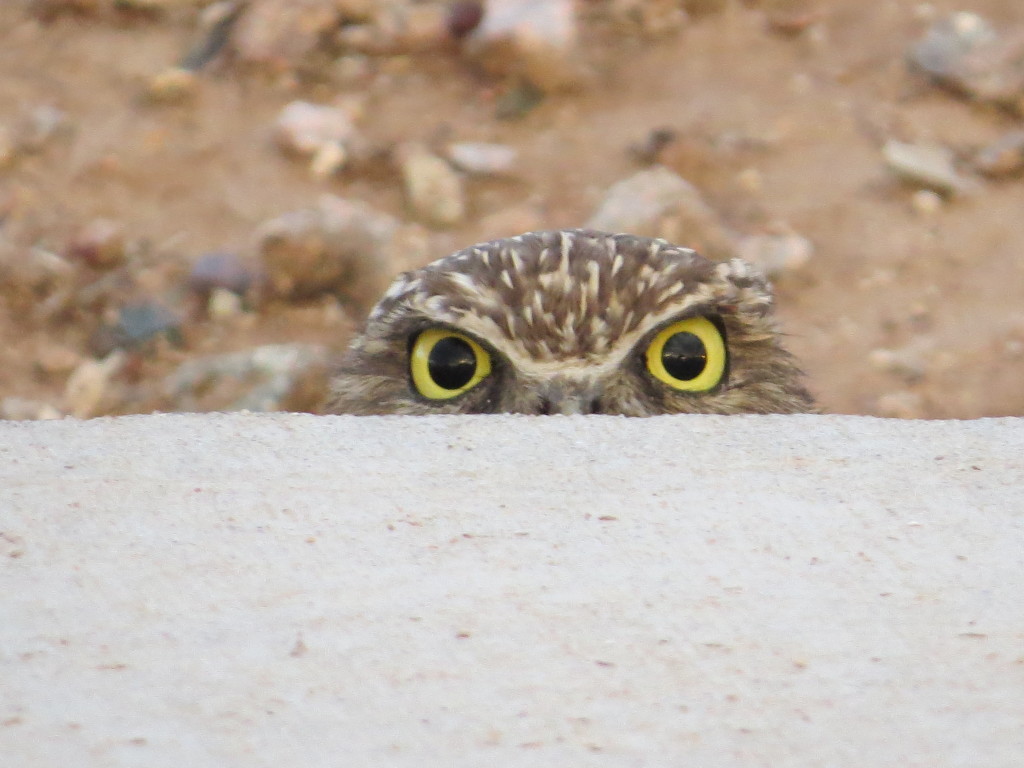 Scanning a residential pond in the low light of the evening, I was excited to see the brilliant pop of color of the male Vermilion Flycatcher in my binoculars. They never get old.
Scanning a residential pond in the low light of the evening, I was excited to see the brilliant pop of color of the male Vermilion Flycatcher in my binoculars. They never get old.
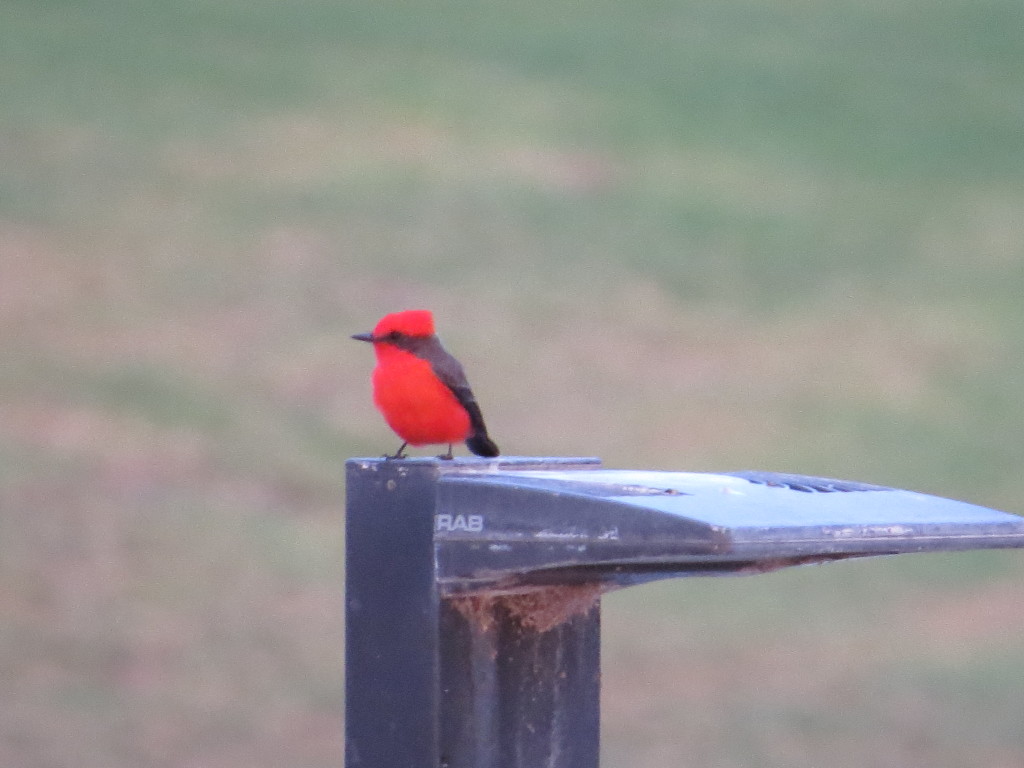 We also saw a Jackrabbit of some sort which was a cool experience.
We also saw a Jackrabbit of some sort which was a cool experience.
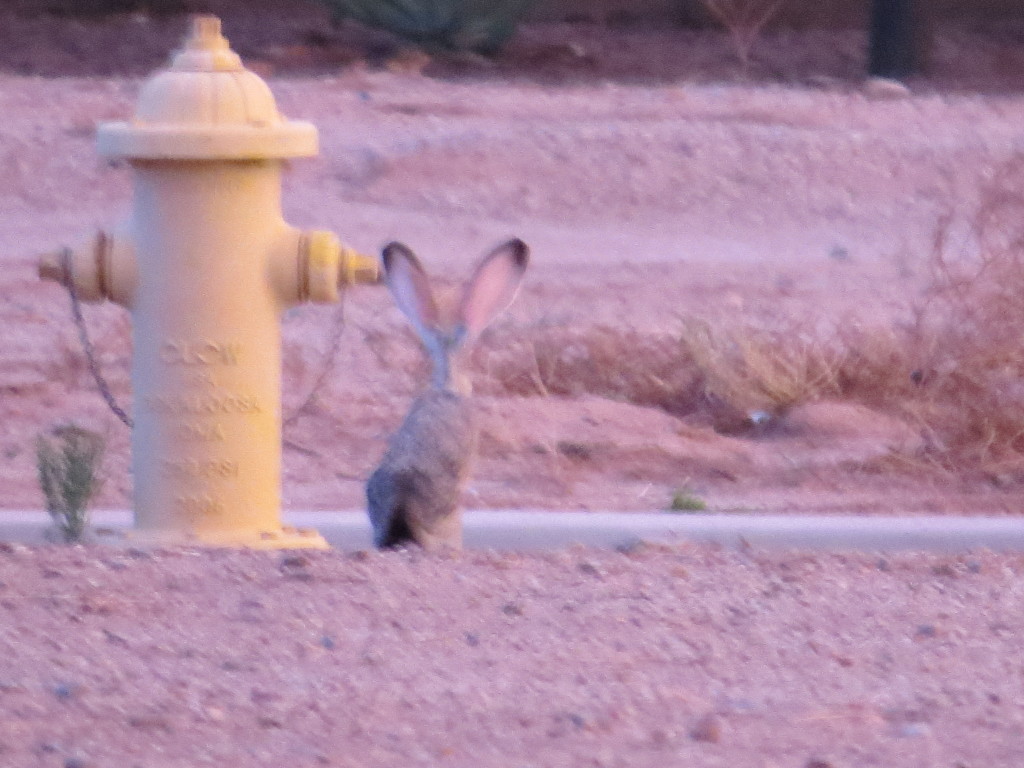 The Arizona fun isn’t over. Next up is the final post and arguably the ugliest and cutest birds you will see.
The Arizona fun isn’t over. Next up is the final post and arguably the ugliest and cutest birds you will see.
Glaucous Gull
Great Black-backed Gull
Northern Gulls Gone Wild
I have a confession: I used to really hate Gulls. Even in my early years of birding, I saw them as trash compactors and poop factories. They’re everywhere, especially in nasty places like landfills, dumpsters, Wal-Mart parking lots… To think of them as birds seemed degrading to the likes of Warblers and Owls. Then once I got to a point in birding where I was willing to accept them as birds, I was faced with the ID headaches of doppelganger species, multiple molt cycles, and hybrids, so I dealt with that like any normal person facing a difficult task–avoidance. From reading around the bird blogosphere, I’ve come to learn that this reluctance to get into Gulling is normal. Something happens to us all, though. It’s inevitable. Something finally gives. For some, the turning point may come with seeing a really cool Gull like an adult Sabine’s. For others, it could come when one has gained more confidence in identification. For me, it was the fact that I had ignored a large pocket of untapped life Gulls in my own state. It turns out that Minnesota gets a phenomenal collection of winter Gulls on Lake Superior in the Duluth area. By putting this off for so long all the while going deeper down the rabbit-hole of birding, I had reached a point where I wasn’t reluctant any longer. In fact, I was stoked to go after those Gulls from northern Canada. Minnesota birding phenom, John Richardson, fanned those flames by finding species after species of these rarer northern Gulls and posting jaw-dropping photos on FB.
So on our way north for Thanksgiving, the fam and I stopped by Canal Park to meet up with John and hopefully some of the cool Gulls. I was on a bit of a bad-luck streak, though, after freshly missing the Kiskadee–so there were no Iceland, Glaucous, or Great Black-backed Gulls for me on this day. I did finally get to see some adult Thayer’s Gulls, a bird that was previously just technically only on my life list because of a long-distance sighting of a juvenile. This was better. Much, much better.
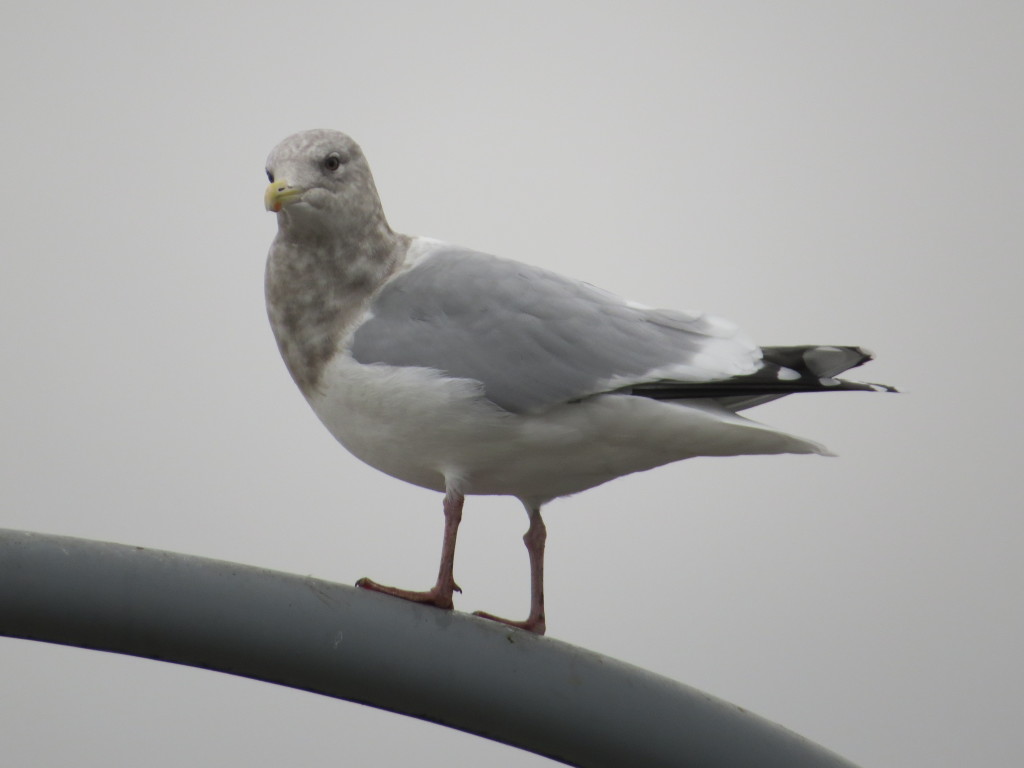
There were also Herring Gulls. There are always Herring Gulls.
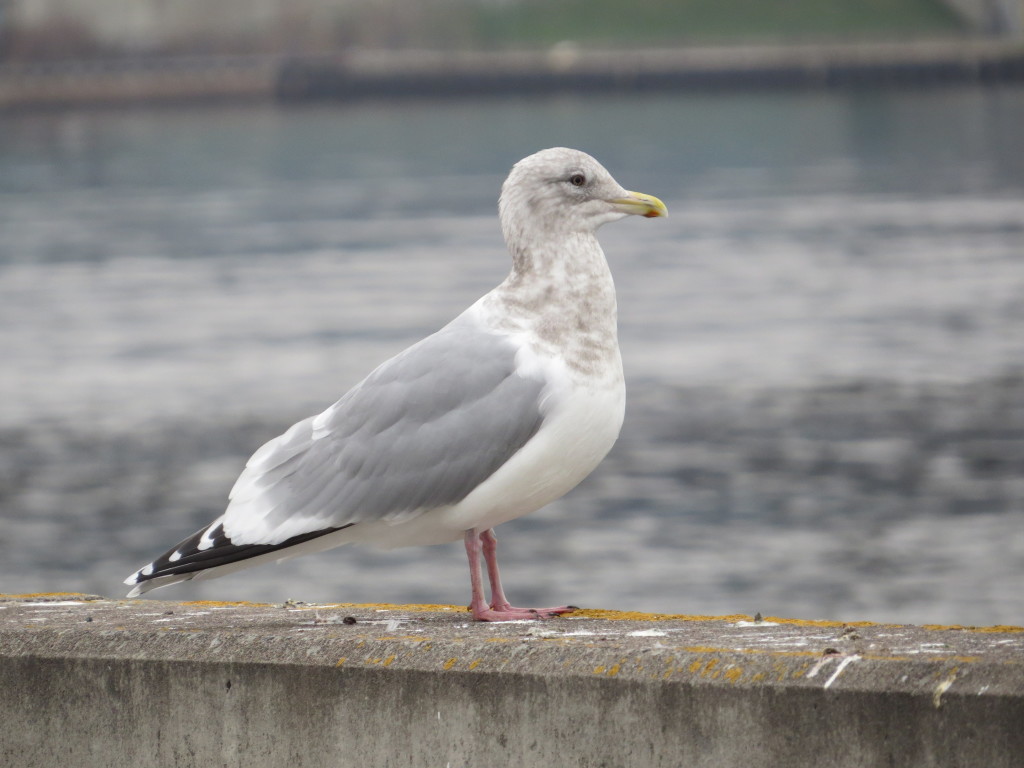
With the dark eye and hood, the Thayer’s really do stand out from the ubiquitous Herring and Ring-billed Gulls.
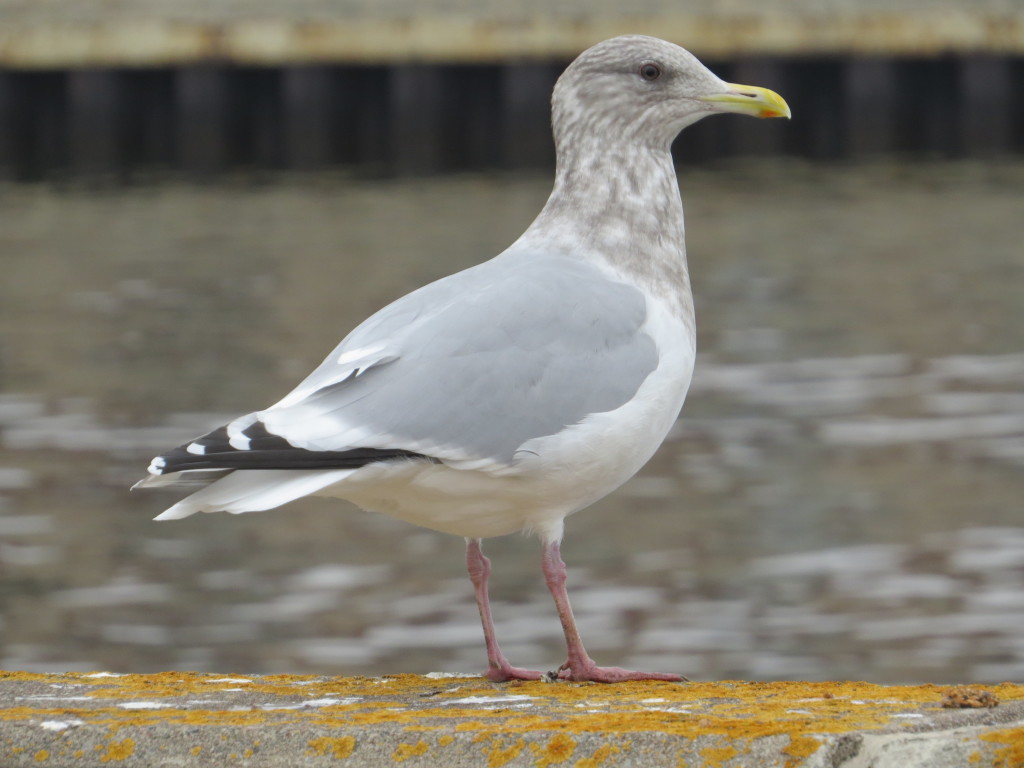
For the non-birder and the emerging Guller, here you can see a contrast between the Thayer’s on the left and the Herring on the right. Note the difference in size, shape, and eye color (dark iris for the THGU, yellow for the HEGU).
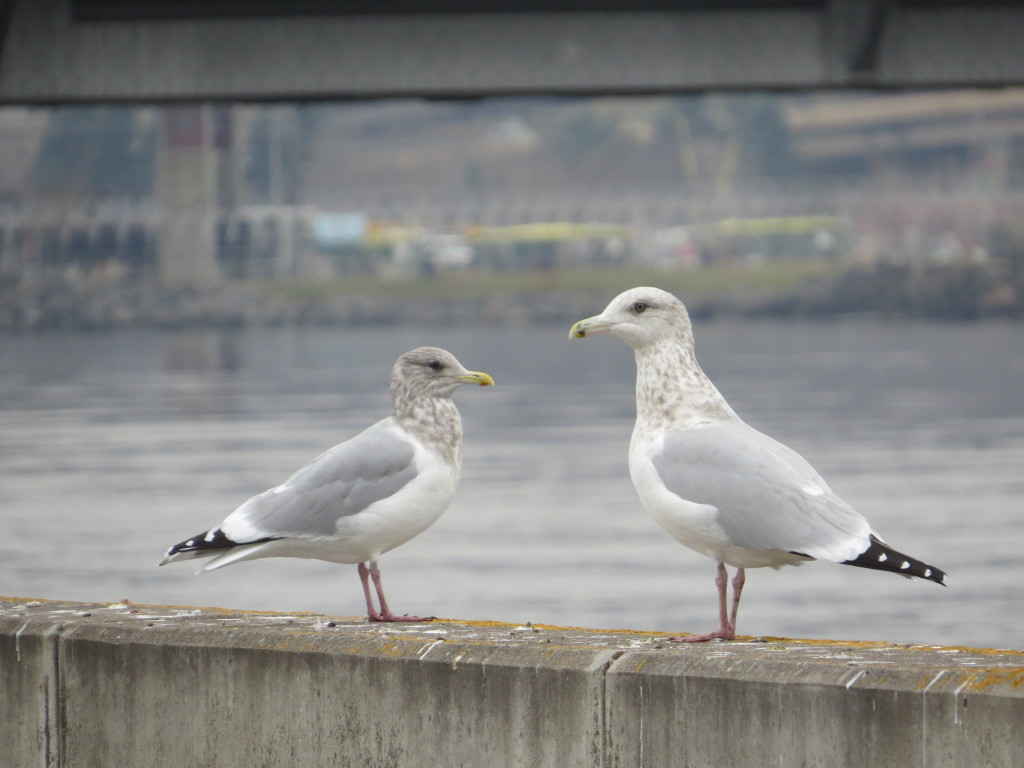 Gull identification is hard, especially if one is only looking at pictures or studying field guides. Learning them from books is even kind of boring which I proved by falling asleep one night studying Gulls in Sibley. To study Gulls and get to know them, one must learn Gulls through immersion–get yourself up close and in person among the Gulls and go with someone who knows more about the Gulls than you do. Though I didn’t add any lifers on this try, my confidence and excitement for Gulling increased under the tutelage of John.
Gull identification is hard, especially if one is only looking at pictures or studying field guides. Learning them from books is even kind of boring which I proved by falling asleep one night studying Gulls in Sibley. To study Gulls and get to know them, one must learn Gulls through immersion–get yourself up close and in person among the Gulls and go with someone who knows more about the Gulls than you do. Though I didn’t add any lifers on this try, my confidence and excitement for Gulling increased under the tutelage of John.
After this brief visit to Canal Park, we went further north to enjoy the holiday with family. I desperately wanted to sneak back down to Duluth during our visit home to make another go of it. Melissa suggested instead that we just stop there again on our way back south. Good deal, wouldn’t you say?
In a form of birding symbolism, the sun was now shining brightly on our second try. Little did I know just how bright things would get. I did notice a lot more Gulls right away, though.
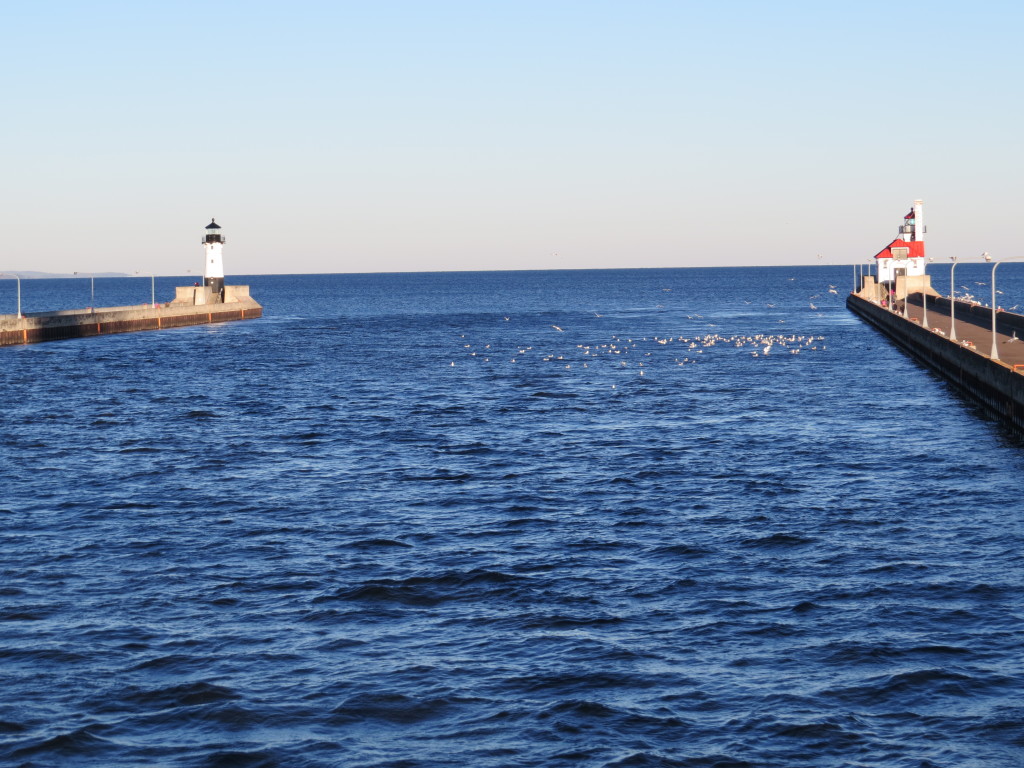
Duluth Shipping Canal
As I scanned the Gulls lining the pier on the right from the pier on the left, I immediately spotted the gorgeous adult Great Black-backed Gull John had found earlier that week! Lifer! I could not wait to get across the lift bridge and over to the other side to check it out. Once over there, Evan and I were joined again by John Richardson and Tony Lau as well as the #1 eBirder in the state, Peder Svingen. With about 600 Gulls to look through with some of the best in the business, this was going to be awesome.
As the four of us slowly made our way down the pier, John quickly picked out the 2nd-cycle Iceland Gull he’d found earlier! Lifer #2!
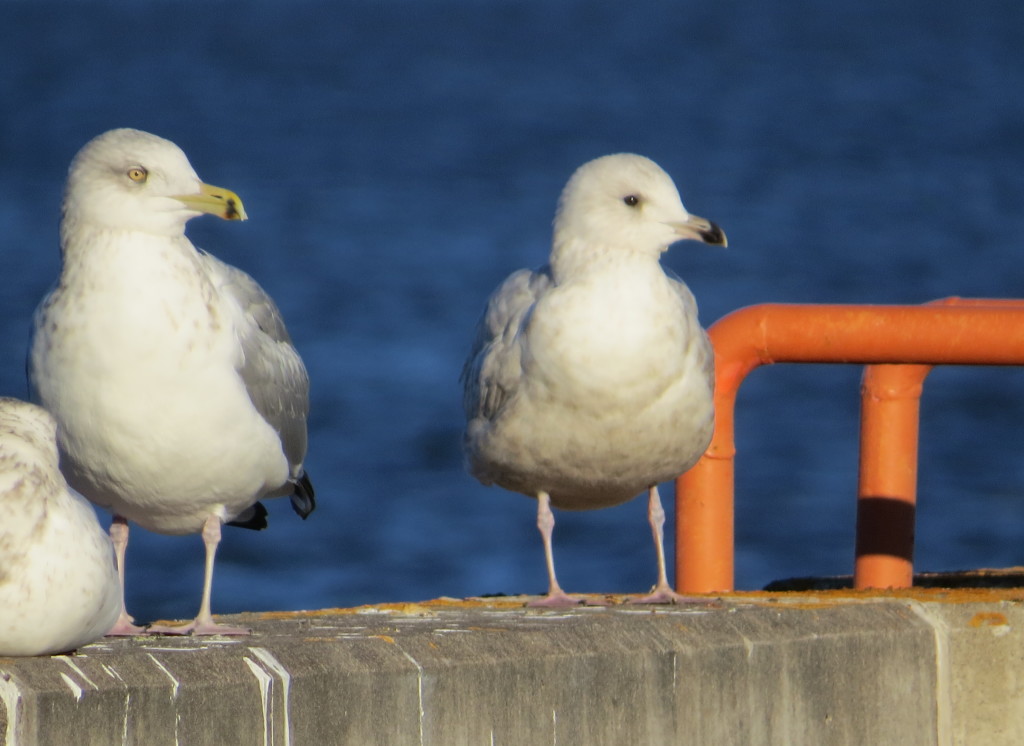
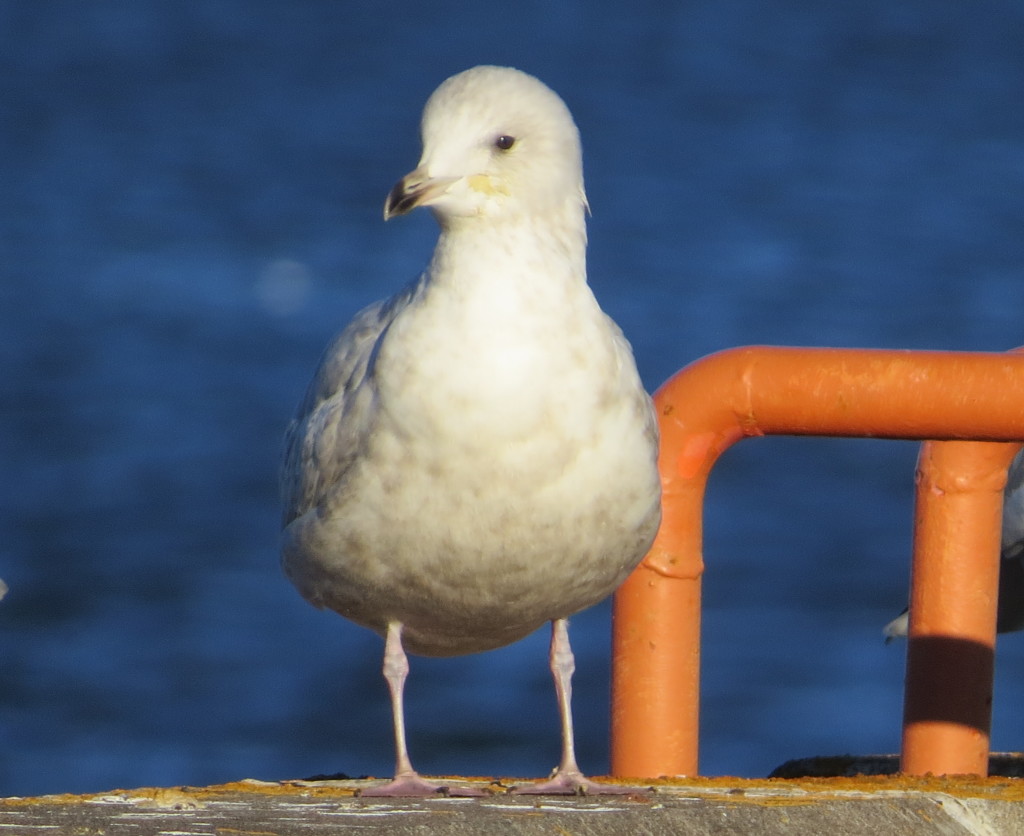 The Iceland was cool, but I was really itching to make my way to that Great Black-backed for some photos. But, you don’t rush down the pier and get out in front of a birding Jedi like Peder Svingen. Patience, young Skywalker. Many Gulls to go through have you.
The Iceland was cool, but I was really itching to make my way to that Great Black-backed for some photos. But, you don’t rush down the pier and get out in front of a birding Jedi like Peder Svingen. Patience, young Skywalker. Many Gulls to go through have you.
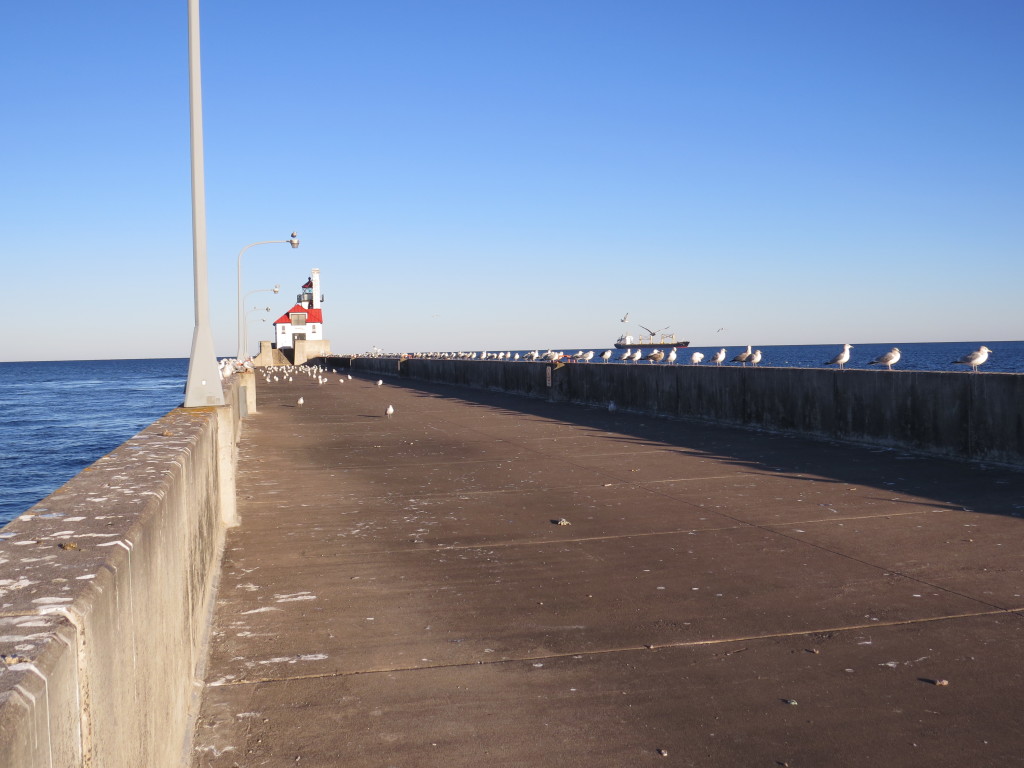 While I waited, a Thayer’s was begging to be crushed.
While I waited, a Thayer’s was begging to be crushed.
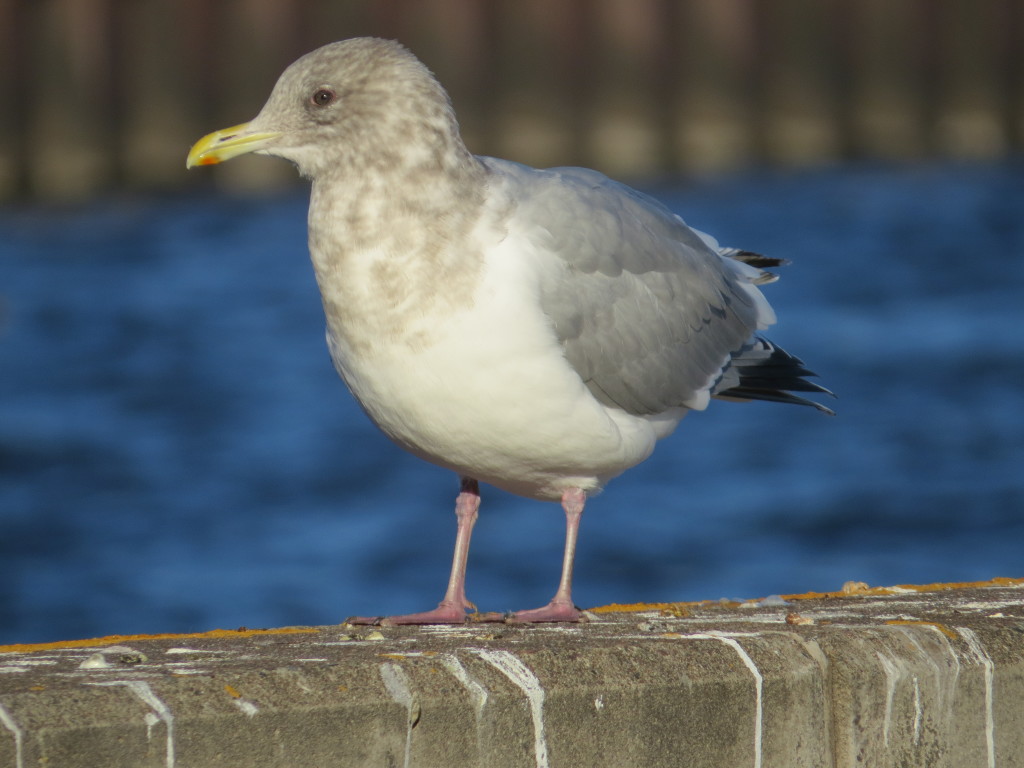
Another exciting find was when John spotted a 1st-cycle Great Black-backed Gull–two Great Black-backeds!
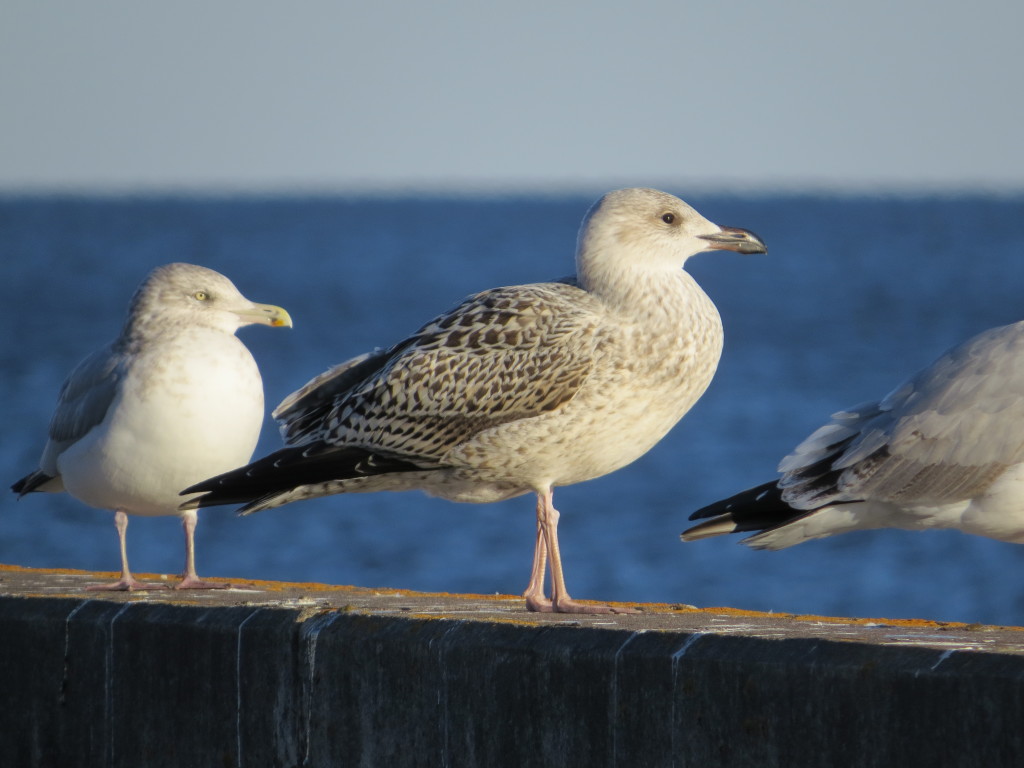 I love how this HEGU is checking him out.
I love how this HEGU is checking him out.
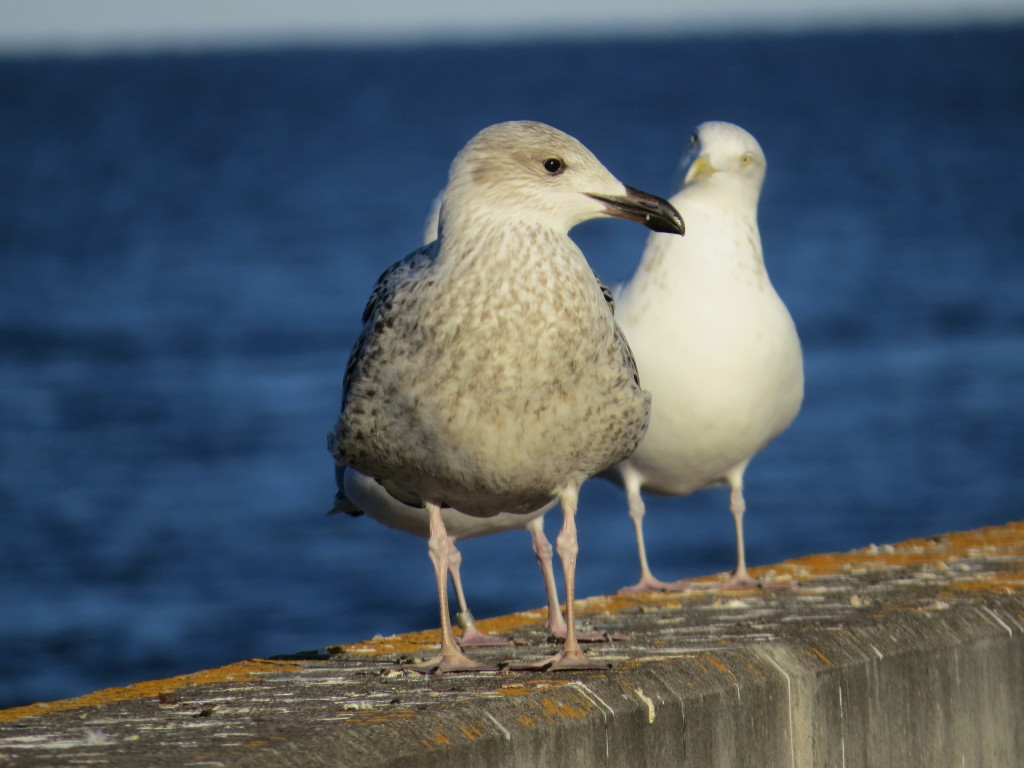
Seriously, though, look at this bruiser.
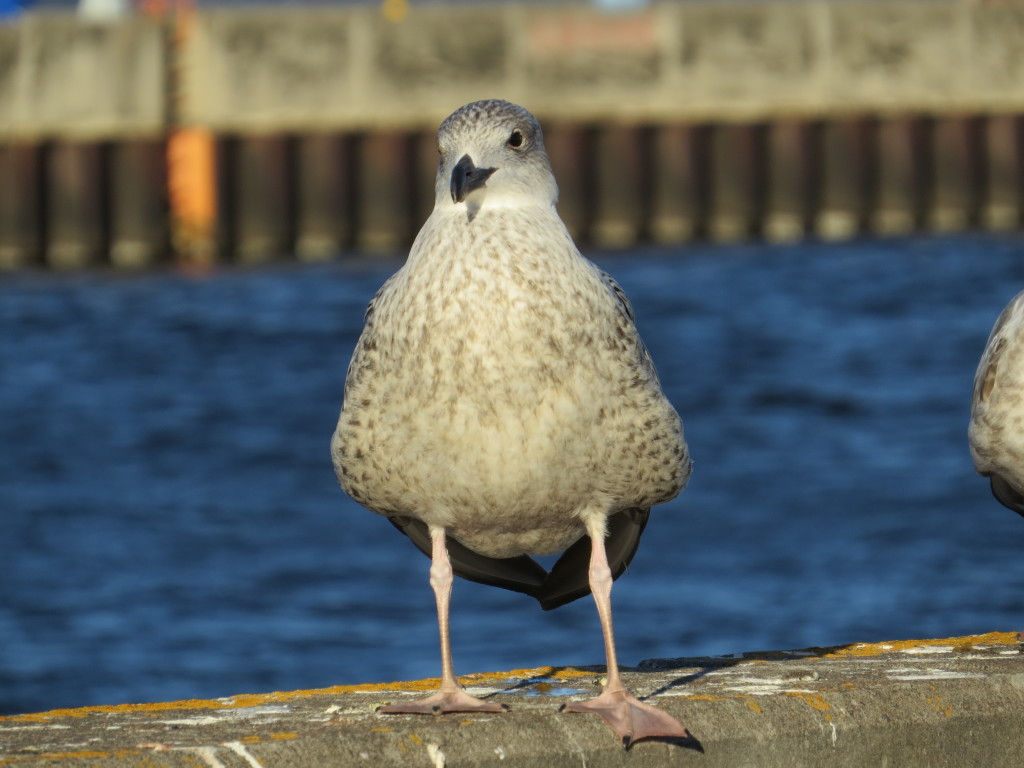 The Great Black-backed Gull is the largest of the Gulls; it dwarfs the Herring Gulls.
The Great Black-backed Gull is the largest of the Gulls; it dwarfs the Herring Gulls.
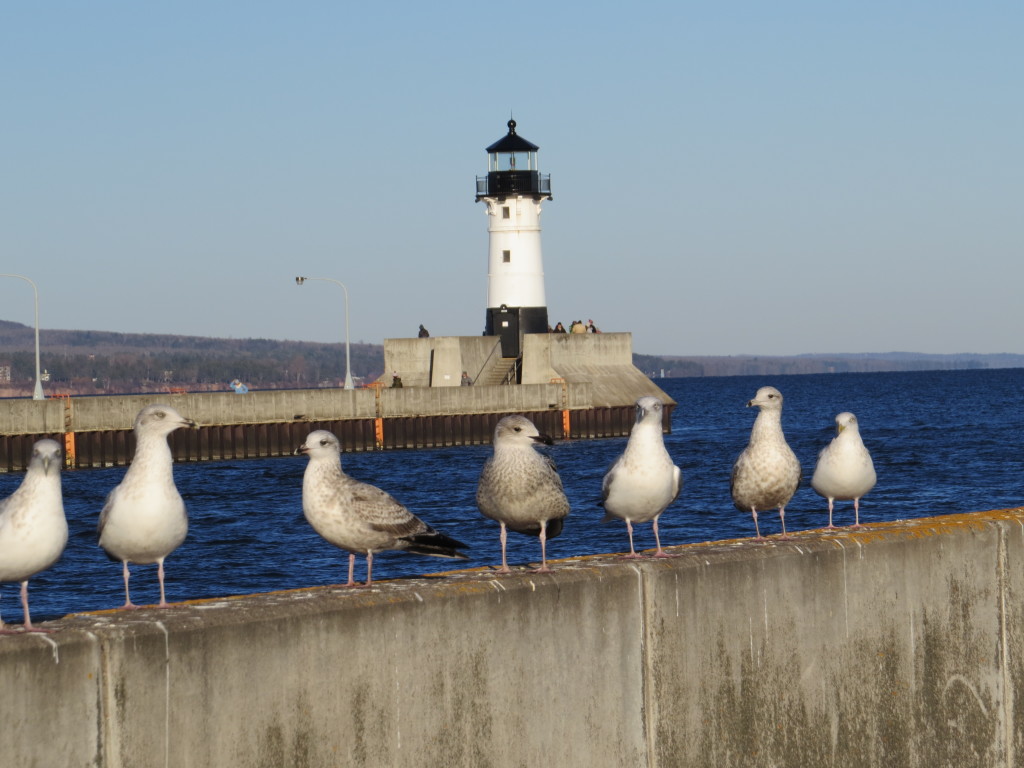
As we were getting within photographing distance of the adult Great Black-backed Gull, magic happened. The other guys spotted our third lifer of the hour, the stunning and large Glaucous Gull!
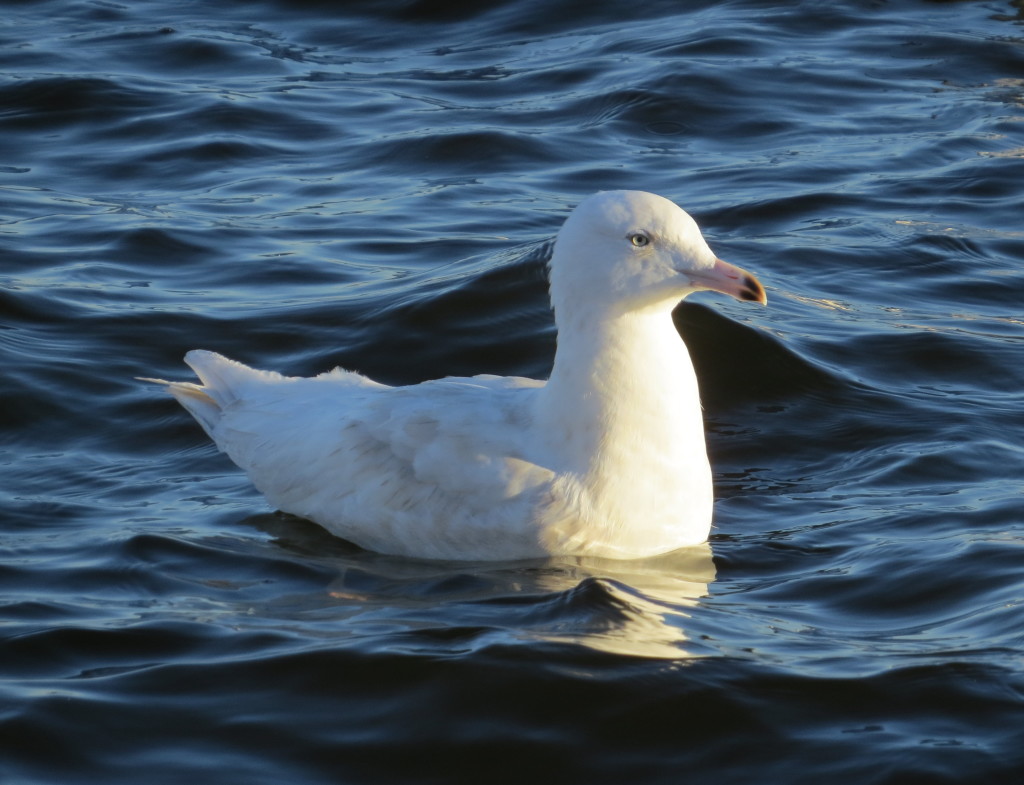
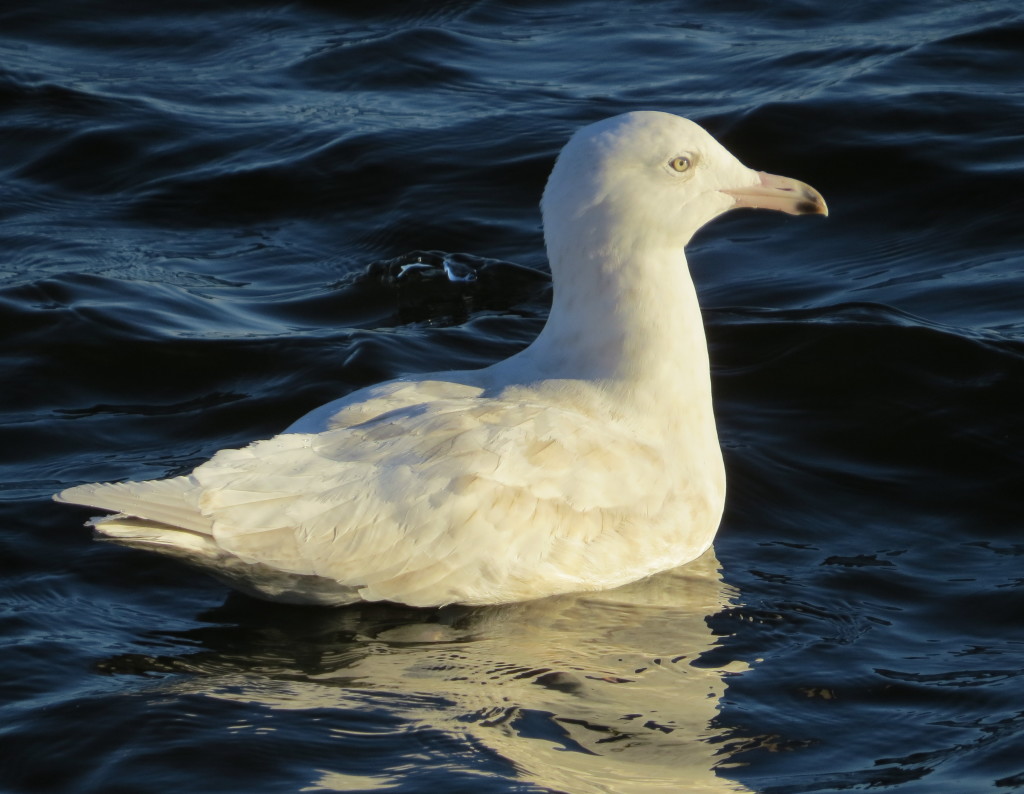 With the Glacous, I now had all three hoped-for lifers and got all my northern Gulls in one tidy outing. The only thing left to do was to photograph my favorite of the three lifers, the adult Great Black-backed Gull, a stand-out bird.
With the Glacous, I now had all three hoped-for lifers and got all my northern Gulls in one tidy outing. The only thing left to do was to photograph my favorite of the three lifers, the adult Great Black-backed Gull, a stand-out bird.
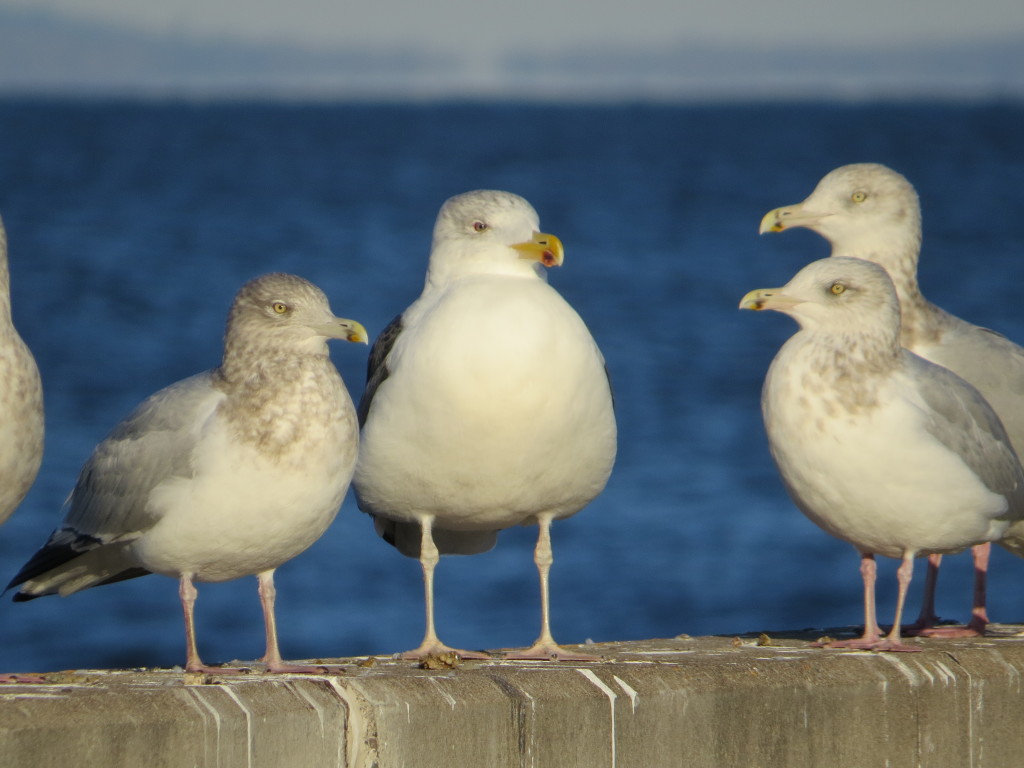
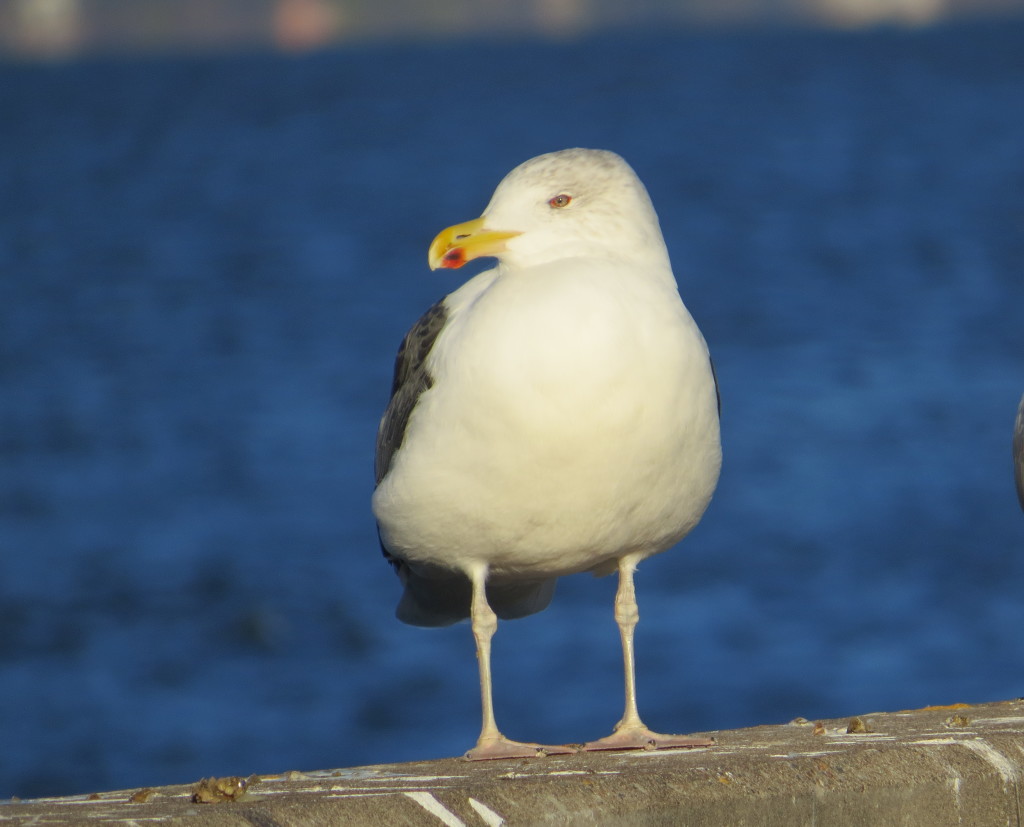
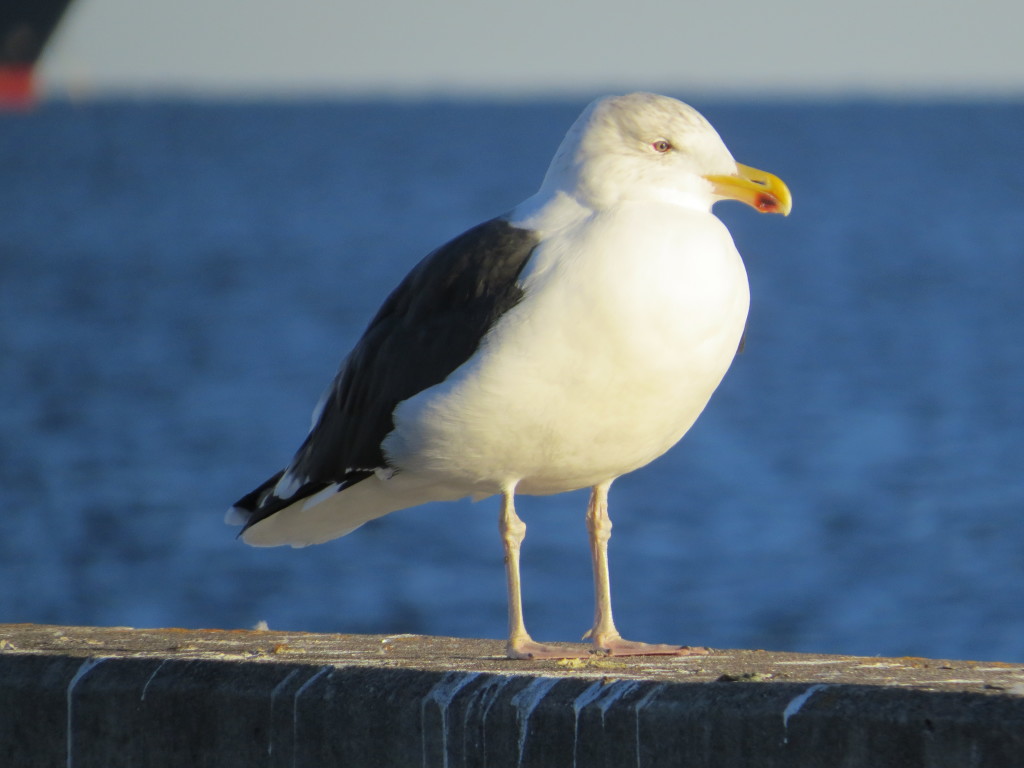
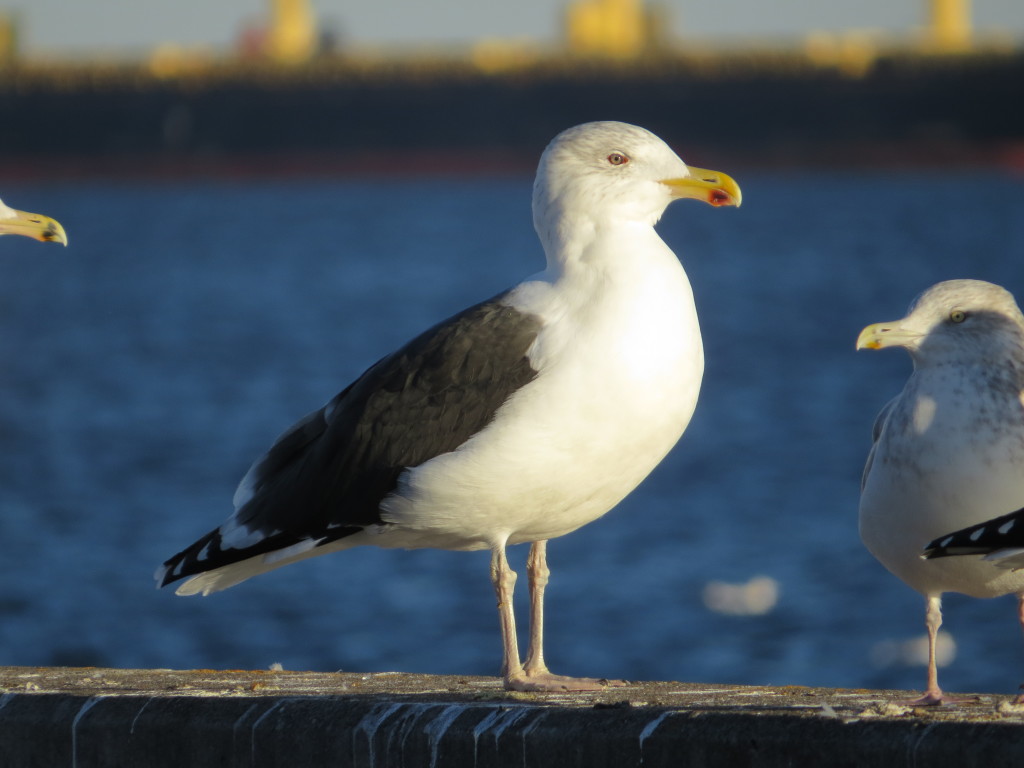
The icing on the cake was that all this Gullifering took place in under an hour, and Evan and I got back to the car where the girls were patiently waiting for us. It was a dream outing. I’m glad I’d saved these Gulls for this late in my birding. The timing was perfect because I thoroughly enjoyed this experience and couldn’t have had it any better. Sorting through the hoards of Gulls for the hidden treasures with some talented birders made it all the more fun.
A huge thanks goes out to John Richardson for his daily patrols of Lake Superior, his great Facebook reports, and for his help in pointing out a couple of these lifers. Call me Gull-able, but I now think these birds are pretty cool.
